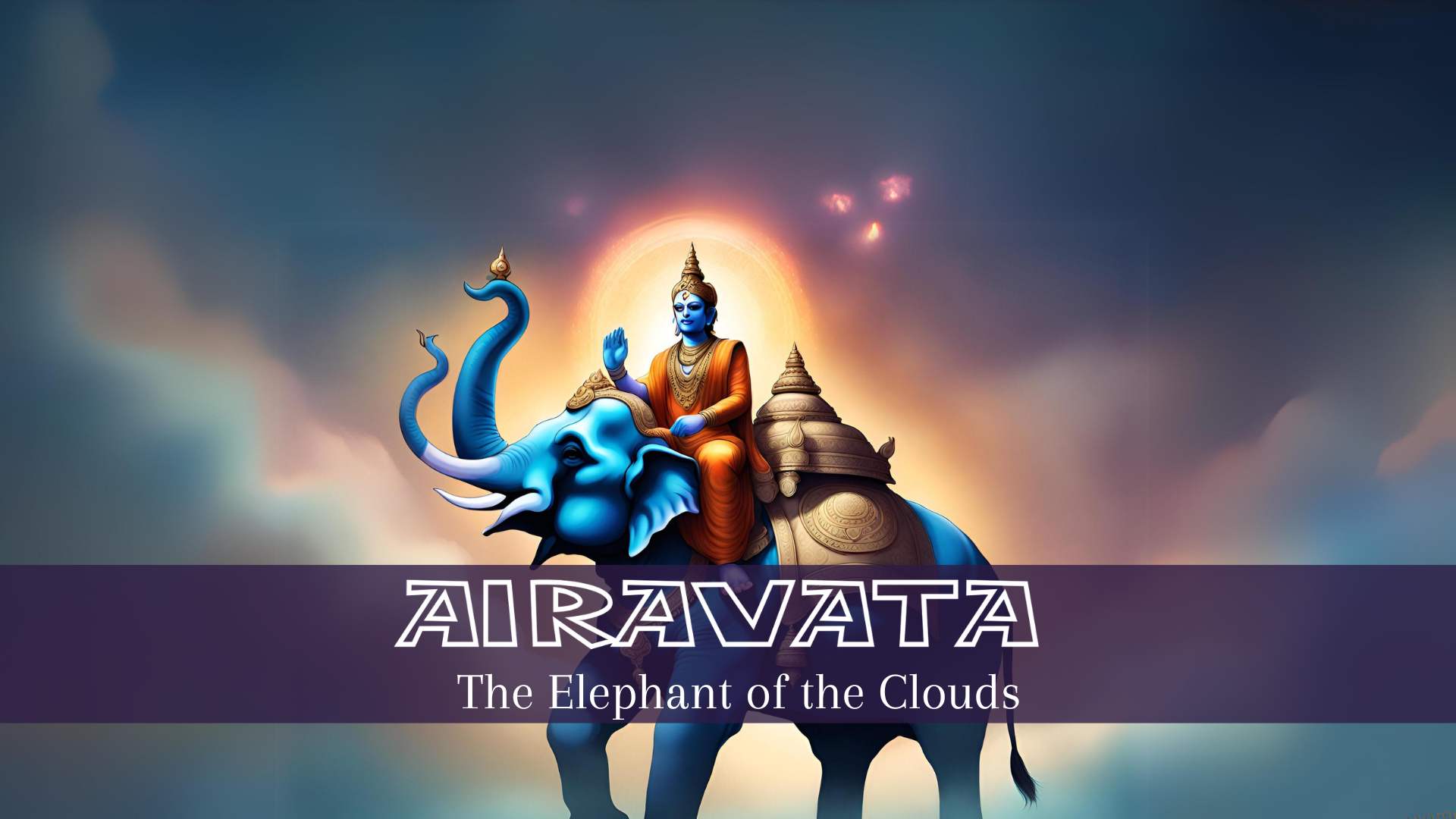
Once upon a time, in the realm of cosmology, there existed a divine realm where gods and goddesses traversed the heavens on the backs of extraordinary creatures known as Vahanas—animal escorts with a celestial purpose. These Vahanas were more than just conveyances; they were symbols of the divine energies they served.
Among the pantheon of gods, Lord Indra, the god of gods, had a unique companion—an ethereal, white elephant named Airavata. This majestic creature, also known as ‘Ardha-Matanga’ or “elephant of the clouds,” played a pivotal role in the celestial drama of Hindu cosmology.
The tale of Airavata's birth is woven with sacred threads. Legend has it that Brahma, the creator, sang holy mantras over the halves of an eggshell. This eggshell, remnants of the hatching of Pakshiraj Garuda, the vehicle of Lord Vishnu, gave rise to seven male and eight female elephants, with Airavata leading the majestic herd. Thus, Airavata emerged into existence with a divine purpose—to be the faithful escort of Lord Indra.
The genesis of Airavata's existence is intertwined with a celestial request. Lord Indra, realizing his need for a loyal companion, approached Lord Brahma with a humble plea. Brahma, the creator of worlds, granted Indra's wish. Calling upon the divine bird Garuda, Brahma tasked it with producing a sacred egg. Garuda, with its wings of grace, swiftly complied. The egg, dropped in Brahmaloka, cracked open to reveal Airavata—a magnificent elephant with four tusks and seven trunks.
Blessed by Lord Brahma, Airavata became the cherished companion of Lord Indra. The white elephant's loyalty knew no bounds as it served Indra eternally, transporting him to celestial events and battles in Deva Loka.
Yet, the tale takes a dramatic turn with the mention of Samudra Manthan—the churning of the milky ocean. In one version from the Ramayana, Airavata's unintentional role in a cosmic blunder unfolds. During a visit to Sage Durvasa, Lord Indra, mounted on Airavata, received a garland of precious flowers. Ignorantly, Indra placed the fragrant garland on Airavata's tusks, attracting a swarm of bees. Irritated, Airavata threw the garland to the ground, enraging Sage Durvasa, who cursed Indra and the gods, setting in motion the cosmic events of Samudra Manthan.
In Mahabharata, a different version emerges, suggesting that Airavata was born during the Samudra Manthan and tamed by Lord Indra afterward. The Bhagavad Gita further elaborates on Airavata, describing it as the king of elephants and a symbol of Lord Krishna's glories.
The confusion surrounding Airavata's role in Samudra Manthan is clarified in the Bhagavata Purana, which proposes that different Indras in different eras had their own Airavatas.
Airavata's significance extends beyond legends into the realm of nature. In Hinduism, Airavata is credited with playing a vital role in the water cycle. The elephant's connection to rain and water is beautifully expressed where Airavata, sensing Indra's desire to bring rain to the people, uses its trunk to lift water from the underworld into the clouds. This collaboration between Indra and Airavata results in the rainfall that nourishes the earth.
In essence, the story of Airavata is not just a legend but a profound narrative that intertwines the celestial and the natural—a tale where gods and elephants collaborate to sustain the cycle of life and prosperity. And so, Airavata, the mighty white elephant, stands not only as a king among elephants but as a revered figure in the grand tapestry of Hinduism.
NEXT ARTICLE